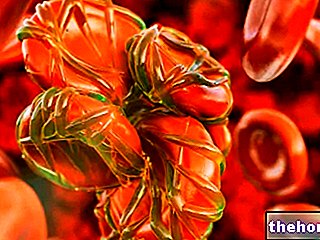
What is Akynzeo and what is it used for - Netupitant and Palonosetron?
Akynzeo is a medicine used to prevent nausea and vomiting in adult cancer patients treated with chemotherapy (cancer therapy).
Some types of chemotherapy are known to induce severe nausea and vomiting; Akynzeo is used in patients treated with highly emetogenic (vomiting) chemotherapy based on cisplatin or other moderately emetogenic chemotherapy.
Akynzeo contains the active ingredients netupitant and palonosetron.
How is Akynzeo used - Netupitant and Palonosetron?
Akynzeo is available as capsules containing 300 mg of netupitant and 0.5 mg of palonosetron. The patient should take one capsule one hour before the start of each chemotherapy cycle.
The medicine can only be obtained with a prescription.
How does Akynzeo - Netupitant and Palonosetron work?
The two active ingredients contained in Akynzeo work by blocking two different mechanisms involved in inducing nausea and vomiting during chemotherapy. Netupitant works by blocking neurokinin 1 (NK1) receptors, which are found in the nervous system and are responsible for the delayed phase. of nausea and vomiting (which occurs after the first 24 hours); palonosetron, on the other hand, blocks the 5-HT3 receptors in the intestine, which are responsible for the immediate phase (which occurs within the first 24 hours). Containing both active ingredients, Akynzeo helps to control both the immediate and the delayed phase of nausea and vomiting that arise following chemotherapy. One of the active substances, palonosetron, has been authorized in the EU since 2005.
What benefit has Akynzeo - Netupitant and Palonosetron shown during the studies?
In a main study comparing Akynzeo to palonosetron alone, 90% of patients taking Akynzeo (121 out of 135) had no episodes of vomiting in the five days after starting highly emetogenic chemotherapy compared to 77% of patients who took palonosetron alone (104 out of 136). A second main study looked at the benefits of Akynzeo in patients receiving moderately emetogenic chemotherapy. Approximately 88% of patients who took Akynzeo had no vomiting episodes on first day after the first course of chemotherapy, compared with 85% of patients who took palonosetron. For days 2 to 5 the figures were 77% for patients in the Akynzeo group and 70% for those in the palonosetron group. This study involved 1,455 patients and the patients were given concomitantly dexamethasone, another antiemetic medicine, as an add-on treatment.
What is the risk associated with Akynzeo - Netupitant and Palonosetron?
The most common side effects reported for Akynzeo are headache (seen in 3.6% of patients), constipation (3.0%) and fatigue (1.2%). For the full list of side effects and limitations, see the package leaflet.
Why has Akynzeo - Netupitant and Palonosetron been approved?
The Agency's Committee for Medicinal Products for Human Use (CHMP) noted that Akynzeo is effective in preventing both the immediate and delayed phase of nausea and vomiting following chemotherapy, and that the medicine has a favorable safety profile. The Committee therefore concluded that the medicine's benefits outweigh its risks and recommended that it be approved for use in the EU.
What measures are being taken to ensure the safe and effective use of Akynzeo - Netupitant and Palonosetron?
A risk management plan has been developed to ensure that Akynzeo is used as safely as possible. Based on this plan, safety information has been added to the summary of product characteristics and package leaflet for Akynzeo, including the appropriate precautions to be followed by healthcare professionals and patients. Further information can be found in the summary of the risk management plan
More information on Akynzeo - Netupitant and Palonosetron
On May 27, 2015, the European Commission granted a "Marketing Authorization" for Akynzeo, valid throughout the European Union. For more information on Akynzeo therapy, read the package leaflet (included with the EPAR) or consult your doctor. or the pharmacist. Last update of this summary: 05-2015.
The information on Akynzeo - Netupitant and Palonosetron published on this page may be out of date or incomplete. For a correct use of this information, see the Disclaimer and useful information page.




























